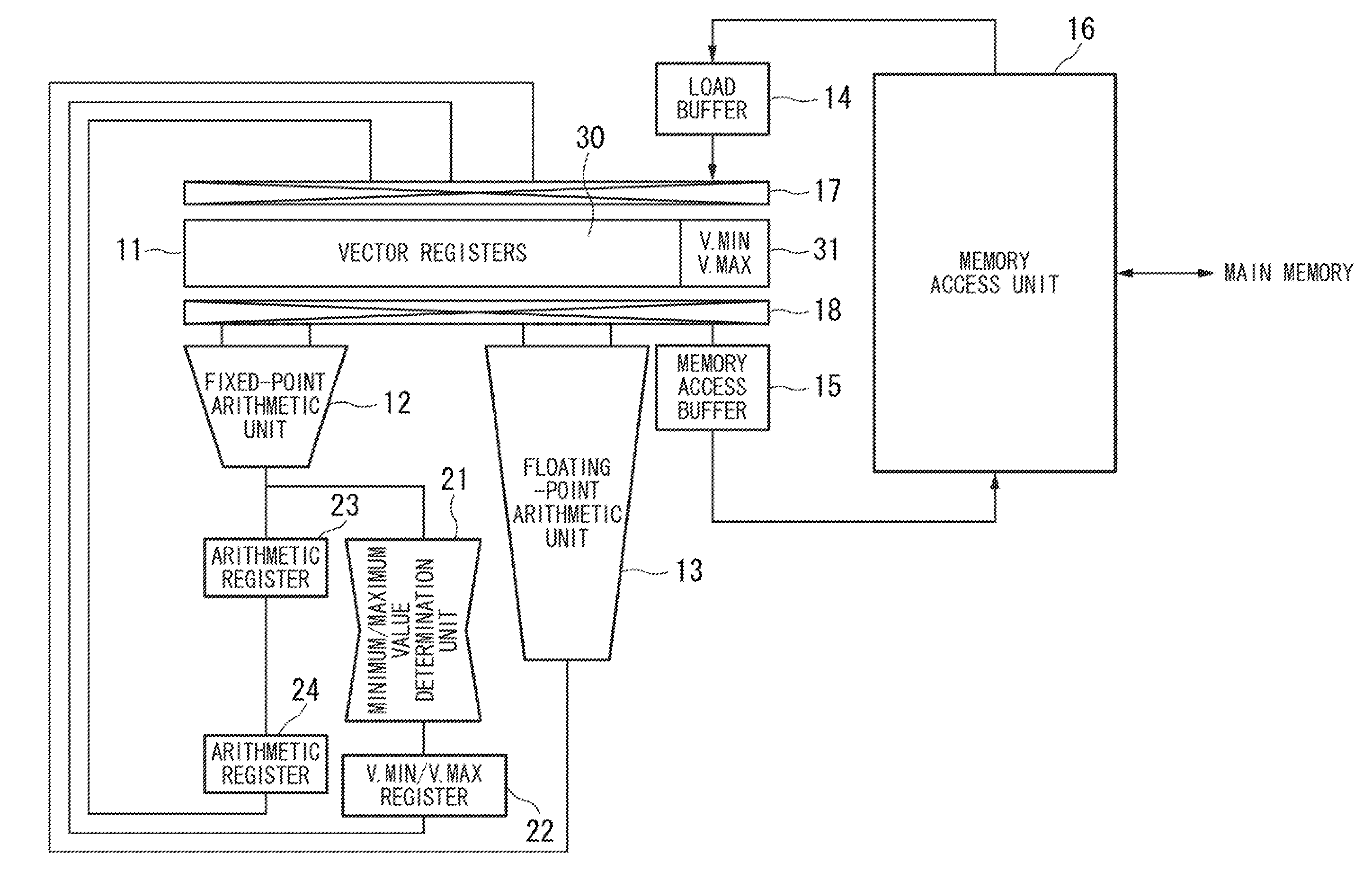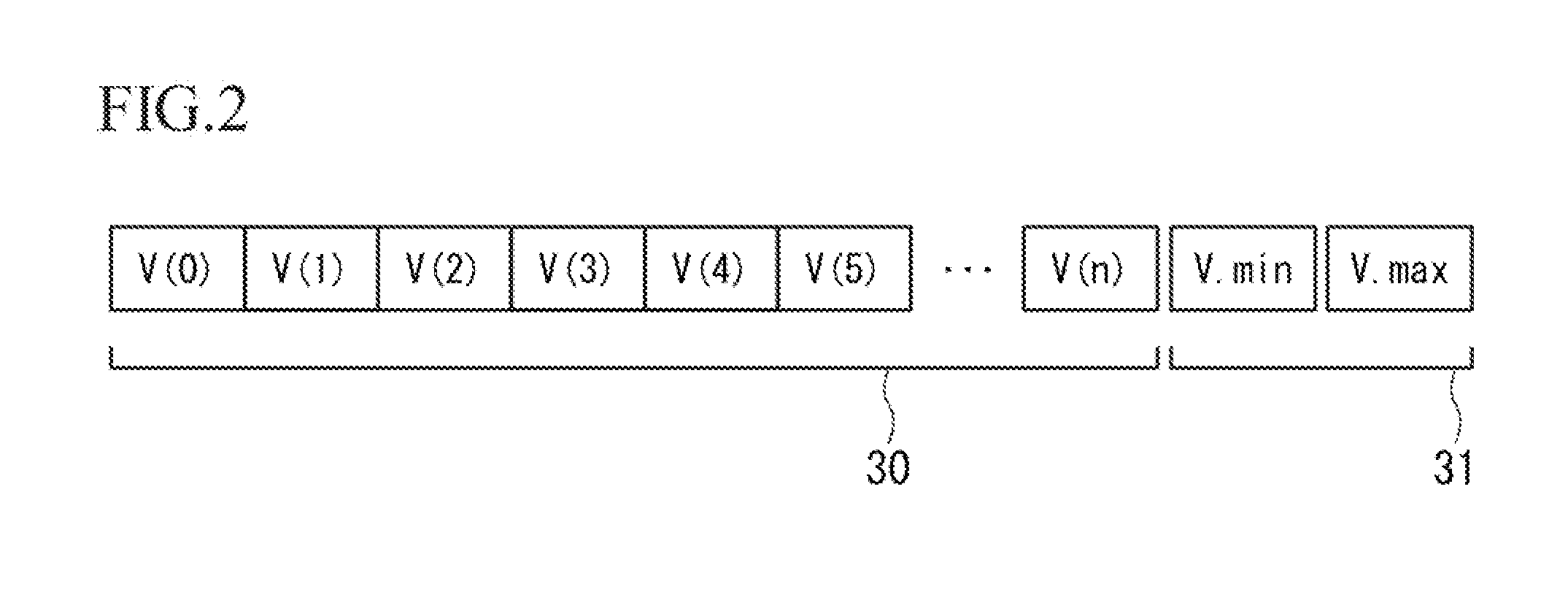Vector computer and instruction control method therefor
a vector computer and instruction control technology, applied in the field of vector computers, can solve the problems of complex procedures, inability to perform an overtaking control, and difficulty in detecting address dependency, so as to narrow down the access range of addresses and increase the number of overtaking patterns
- Summary
- Abstract
- Description
- Claims
- Application Information
AI Technical Summary
Benefits of technology
Problems solved by technology
Method used
Image
Examples
first embodiment
1. First Embodiment
[0041]FIG. 1 is a block diagram showing the constitution of a vector computer according to a first embodiment of the present invention. The vector computer of the first embodiment is constituted of vector registers 11, a fixed-point arithmetic unit 12, a floating-point arithmetic unit 13, a load buffer 14, a memory access buffer 15, and a memory access unit 16, wherein functions of those blocks are similar to those of a conventionally-known vector computer. The vector computer further includes a minimum / maximum value determination unit 21, a minimum / maximum value register 22 (V.MIN / MAX), and arithmetic registers 23, 24 retaining arithmetic results.
[0042]The vector registers 11 are each used for vector operations. Each vector register includes a plurality of elements (e.g. 128-512 elements). The functionality of each vector register 11 is divided into a main register section 30 and a minimum / maximum value register section 31 (V.min, V.max) retaining minimum / maximum...
second embodiment
2. Second Embodiment
[0092]In the first embodiment, address dependency source instructions regarding vector gather / scatter instructions are calculated via fixed-point calculations; hence, as shown in FIG. 9B, the minimum / maximum value determination unit 21 utilizes a difference of turnaround time (TAT) between the fixed-point calculation and the floating-point calculation so as to determine minimum / maximum values based on the calculation result of the fixed-point arithmetic unit 12.
[0093]Access addresses for vector gather / scatter instructions are practically calculated via the fixed-point calculation, whereas it is possible to execute vector gather / scatter instructions by use of loaded data of vector registers in accordance with a sequence of instructions as follows.
[0094]VLD $v7, 8, $s10;
[0095]VGT $v8, $v7;
[0096]A first line refers to a vector load instruction (VLD $v7, 8, $s10), in which upon loading data into the vector register ($v7), the vector register ($v7) performs a vector g...
third embodiment
3. Third Embodiment
[0103]FIG. 12 is a block diagram showing the constitution of a vector computer according to a third embodiment of the present invention. The vector computer of the third embodiment includes vector registers 211, a fixed-point arithmetic unit 212, a floating-point arithmetic unit 213, a load buffer 214, a memory access buffer 215, a memory access unit 216, a minimum / maximum value determination unit 221, a minimum / maximum value register 222 (V.min, V.max), arithmetic registers 223 and 224, and a secondary minimum / maximum value determination unit 225, which are equivalent to the vector registers 111, the fixed-point arithmetic unit 112, the floating-point arithmetic unit 113, the load buffer 114, the memory access buffer 115, the memory access unit 116, the minimum / maximum value determination unit 121, the minimum / maximum value register 122 (V.min, V.max), the arithmetic registers 123 and 124, and the secondary minimum / maximum value determination unit 125 in the vect...
PUM
 Login to View More
Login to View More Abstract
Description
Claims
Application Information
 Login to View More
Login to View More - R&D
- Intellectual Property
- Life Sciences
- Materials
- Tech Scout
- Unparalleled Data Quality
- Higher Quality Content
- 60% Fewer Hallucinations
Browse by: Latest US Patents, China's latest patents, Technical Efficacy Thesaurus, Application Domain, Technology Topic, Popular Technical Reports.
© 2025 PatSnap. All rights reserved.Legal|Privacy policy|Modern Slavery Act Transparency Statement|Sitemap|About US| Contact US: help@patsnap.com



